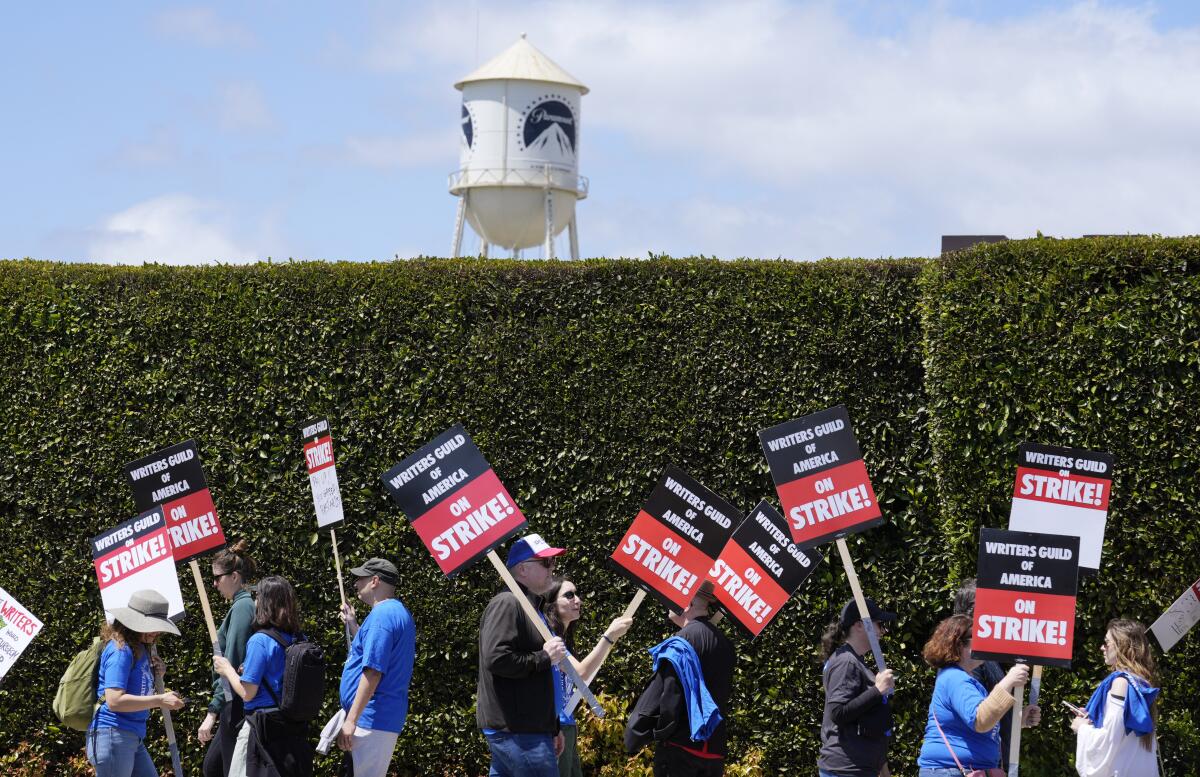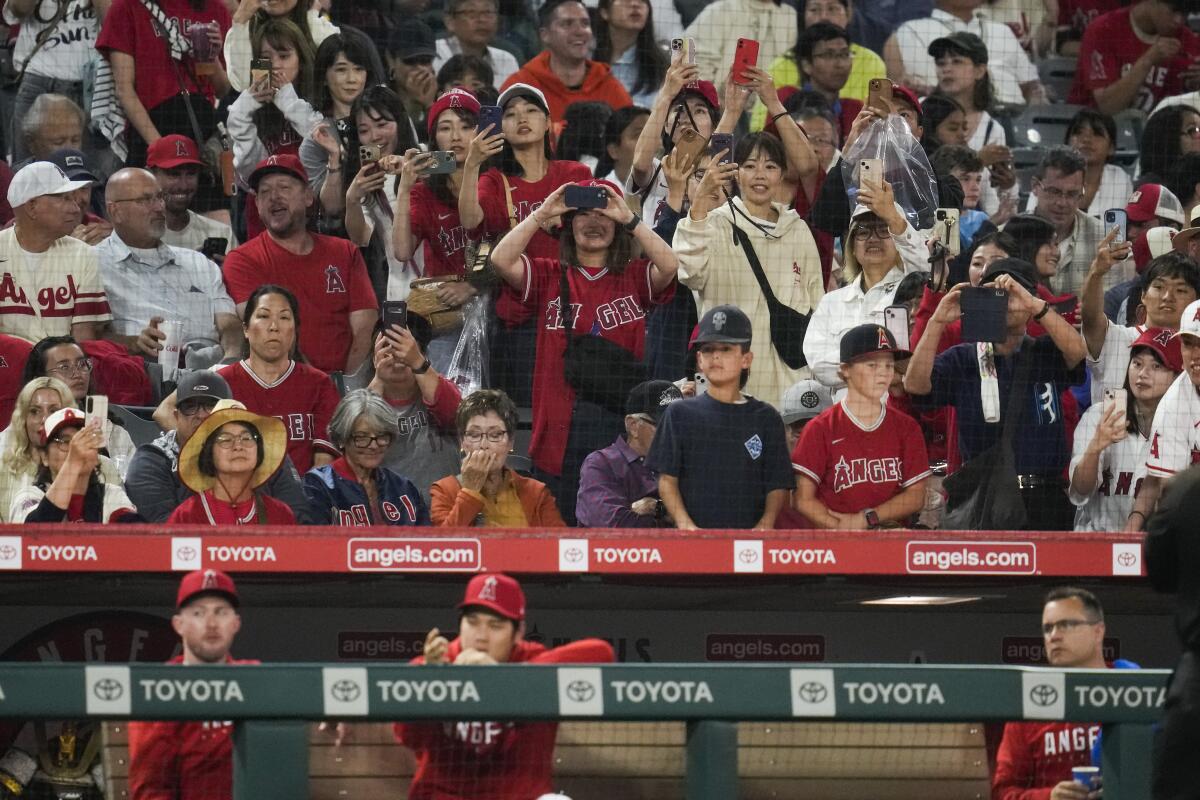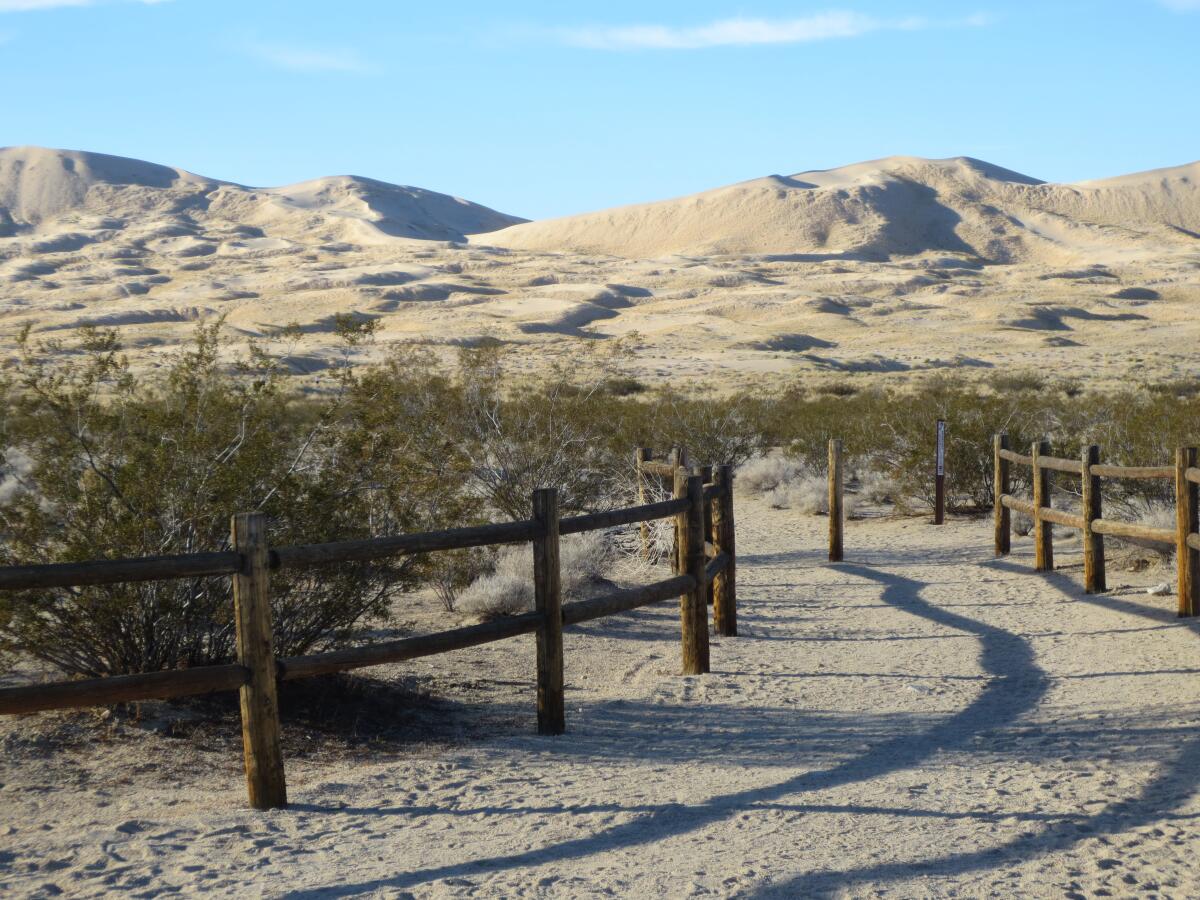Good morning. It’s Monday, Sept. 25. Here’s what you need to know to start your day.
- Survey finds wide opposition to cash reparations
- WGA and major Hollywood studios reach tentative deal
- Lung disease is killing California stone workers
- And here’s today’s e-newspaper
Cash payments get the spotlight — and the opposition
California lawmakers have some decisions to make regarding if — and how — the state government will respond to an ambitious effort to create a reparations program for Black residents.
One part of the multilayered recommendations put forth by the California Reparations Task Force has been the focus of much attention and debate: cash payments for the descendants of enslaved African Americans living in California. But many Californians are opposed to the idea.
A recent UC Berkeley poll co-sponsored by The Times found 59% of voters were against cash payments, while 28% support the idea. The divide was sharp among ethnic groups in the state — more than 75% of Black voters surveyed expressed some degree of support, while 65% of white voters voiced some degree of opposition. Nearly 60% of Latino voters and Asian-Pacific voters also opposed cash payments.
The task force presented its 1,080-page report to the state in late June, outlining the historical harms of slavery and its “lingering effects on American society today,” along with recommendations aimed at “enacting meaningful reparations.”
In the survey, many voters agreed that slavery still affects Black residents today. More than half of those polled said the state is either not doing enough, or barely enough, to give Black Californians a fair chance of succeeding.
“The task force’s recommended remedies go far beyond cash payments,” Times reporters Laura J. Nelson and Anabel Sosa wrote, “including proposed reforms to the criminal justice system such as ending cash bail, repealing the ‘three-strikes’ law and paying fair market wages to incarcerated people who work in jails and prisons.”
But the cash payments have drawn heavy media attention and criticism. Six in 10 voters surveyed said it would be unfair for today’s taxpayers to pay for historical wrongs. A majority of those polled also said it was unfair for other oppressed racial and religious groups to be excluded.
I spoke with task force Chair Kamilah Moore last December as the task force was working to finalize its report. She told me that the concept of reparations “is very misunderstood.”
“When you talk to actual African Americans [and ask]: ‘What would you do with reparations?’ They’ll say: ‘I’ll start a business, I’ll help my family,’” Moore said. “That’s what the narrative should be.”
When California joined the Union in 1850, it was a free state on paper. But the task force’s report unpacks the history of how slavery existed in the state despite that “free” label — along with California’s fugitive slave law, which permitted people to capture and reenslave people who had escaped from elsewhere.
And the legacy of slavery in California wasn’t exclusive to African Americans, as historian Jean Pfaelzer detailed in her recent book “California, A Slave State.” In it, she sheds light on the state’s neglected history, in which Chinese immigrants and the region’s Indigenous residents were also enslaved and forced to work, a trend exacerbated by the Gold Rush.
So what happens now?
Moore told Laura and Anabel that she hopes a state bill recommending cash payments will be filed in next year’s legislative session to allow for a robust democratic debate.
And with dozens of other recommendations, including changes to state policies and creating a new bureaucracy to manage the reparations process in the state, we might see more movement on this in 2024. But the reception to cash payments could change the political calculus for Newsom and other elected leaders in California as they seek to provide a national model for reparations.
“Often, people will be in favor of the principle but not the policy,” Ange-Marie Hancock, executive director of the Kirwan Institute for the Study of Race and Ethnicity at Ohio State University, told Laura and Anabel. “When you get to the question of what the government should do about it, that’s when the rubber hits the road.”
Today’s top stories

Striking writers take part in a rally in front of Paramount Pictures studio in Los Angeles in May. (Chris Pizzello / Associated Press)
Hollywood strikes
Health
Legislative updates
More big stories
Get unlimited access to the Los Angeles Times. Subscribe here.
Today’s great reads

Los Angeles Angels fans take photos of Shohei Ohtani, bottom center, during a game against the Detroit Tigers in Anaheim on Sept. 16. (Ashley Landis / Associated Press)
‘They’re even down there when he’s not.’ Shohei Ohtani fans remain rabid amid uncertainty. For fans of all stripes, it’s a strange time as the Angels wind down the regular season and their hero is shut down due to injury with free agency looming. One thing that remains unshakable? Their love of the Angels’ two-way player.
Other great reads
How can we make this newsletter more useful? Send comments to essentialcalifornia@latimes.com.
For your downtime

(Samuel Rodriguez / For The Times)
Going out
Staying in
And finally ... a great photo
Show us your favorite place in California! Send us photos you have taken of spots in California that are special — natural or human-made — and tell us why they’re important to you.

Kelso Dunes, photographed in 2013. (Kathy Smith)
Today’s great photo is from Kathy Smith of Goodyear, Ariz.: Kelso Dunes in the Mojave National Preserve. Kathy writes: “This picture was taken at the entrance to the Kelso Sand Dunes. We were there in the late afternoon on a fall day when the natural light is magical. The contours of the dunes reveal themselves beautifully.”
Have a great day, from the Essential California team
Ryan Fonseca, reporter
Laura Blasey, assistant editor
No comments:
Post a Comment